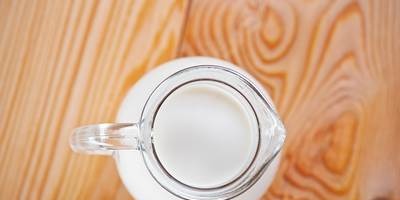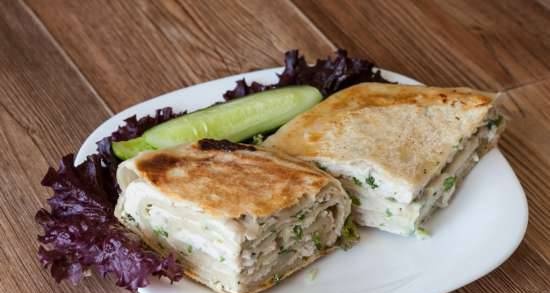|
 In recent years, evidence has emerged to support the strong link between good health and a balanced diet, which has stimulated renewed interest in the issue. In recent years, evidence has emerged to support the strong link between good health and a balanced diet, which has stimulated renewed interest in the issue.
In the light of modern ideas, the old adage "To live, you need to eat" can be formulated as follows.
"To live long, healthy and vigorous, you need to eat good food and in sufficient quantities." A person should eat rationally at any age, but special attention should be paid to the nutrition of the child in the first years of life, because his health in subsequent years largely depends on this.
Fresh milk refers to products with bactericidal properties due to the presence of bactericidal substances in it. In uncooled freshly milked milk, bactericidal properties persist for no more than 2-3 hours, after which the number of microorganisms begins to increase in it. However, the high quality proteins, vitamins and minerals it contains are of particular value. When comparing the nutritional needs of a person and the nutritional properties of milk, it becomes obvious that milk is one of the most wonderful food products that should be an important component of a person's diet throughout his life, because it contains more nutrients necessary for a person than other products. ; in other words, no other product alone can replace milk.
Milk contains about 13% of dry matter, more than many other products, but this is hard to believe because milk is liquid. Solids are represented by proteins, fats, sugars and minerals, each of which plays a specific role in nutrition. In addition, milk is a valuable source of vitamins that promote better absorption of various nutrients.
Milk varies slightly in composition due to the fact that some breeds of cattle produce more fatty milk than others.
On average, milk has the following composition,%:
Water 87.5
Proteins 3.2
Fats 3.6
Carbohydrates 5.0
Minerals 0.7
Milk sold for sale must have normal organoleptic characteristics and meet the requirements of the standards in force in the area. It should be a homogeneous liquid without sediment and flakes, white with a slightly yellowish tinge, taste and smell - clean, without foreign tastes and odors not characteristic of milk. Milk goes on sale in various containers with markings, which usually indicate the name and number of the manufacturer or its trademark, type of milk, volume in liters (on packages), date or day of the deadline for sale, retail price, designation of the current standard.
 Raw milk... As its name suggests, this is milk in its natural state. To purify milk from impurities and preserve its bactericidal properties, freshly milked milk is filtered through several layers of gauze and cooled to a temperature of 10 ° C, at which it is stored for no more than 20 hours. Raw milk... As its name suggests, this is milk in its natural state. To purify milk from impurities and preserve its bactericidal properties, freshly milked milk is filtered through several layers of gauze and cooled to a temperature of 10 ° C, at which it is stored for no more than 20 hours.
Pasteurized milk... This is milk that has been pasteurized, i.e. heat treated at temperatures below its boiling point. During pasteurization, vegetative forms of microorganisms, including pathogenic ones, found in milk are destroyed, which disinfects it, improves quality and increases storage stability.
Pasteurization of milk, depending on the modes, can be prolonged - at a temperature of 63-65 ° C with an exposure of 30 minutes, short-term - at a temperature of 72-76 ° C> with an exposure of 15-20 seconds and instant - at a temperature of 85 ° C without exposure.
Skimmed milk... It is very often sold at a low price, but it is a very healthy product, although it is inferior in calories to whole milk. It has less fat and soluble vitamins A and D, but skim milk contains proteins, calcium, phosphorus, sugar, and water-soluble vitamins B and C. Skim milk does not have the characteristic taste and creamy consistency of whole milk, but it can be seasoned and use for preparing delicious milk drinks and many other dishes. If necessary, the difference in fat content can be compensated butter.
It is recommended to use skim milk if you are overweight, because due to its low calorie content and abundance of nutrients, it is an ideal product for a fasting diet.
Milk products: homemade, culinary recipes
|
 In recent years, evidence has emerged to support the strong link between good health and a balanced diet, which has stimulated renewed interest in the issue.
In recent years, evidence has emerged to support the strong link between good health and a balanced diet, which has stimulated renewed interest in the issue.






